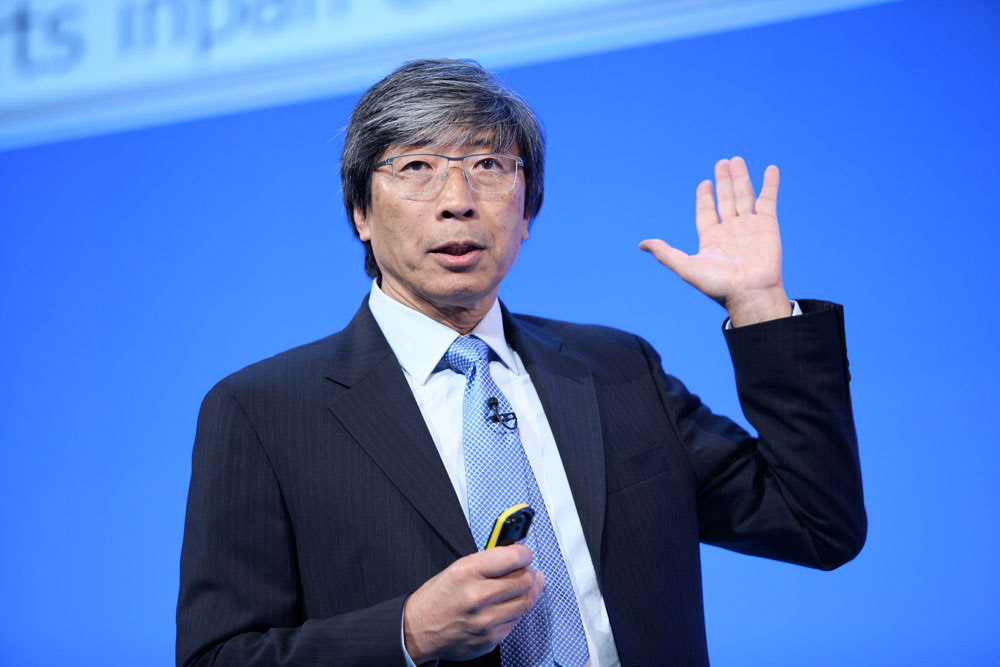In a bold move aimed at reshaping the editorial landscape of one of the nation’s most prominent newspapers, Los Angeles Times owner Dr. Patrick Soon-Shiong has announced plans to bring more conservative voices into the publication’s editorial section. The announcement has sparked heated debate across media and political circles, with critics and supporters weighing in on what the decision means for the future of journalism.
Soon-Shiong, a billionaire biotech entrepreneur and philanthropist, revealed his intent during a recent interview, stating his desire to present a broader spectrum of political perspectives in the newspaper’s opinion section. The initiative comes amid ongoing scrutiny of perceived liberal bias in mainstream media outlets, including the LA Times.
A Push for Balance in a Divided Media Landscape
Soon-Shiong’s vision is reportedly centered on fostering a platform where conservative and progressive ideologies can coexist and engage in constructive dialogue. The Los Angeles Times, long seen as a bastion of liberal viewpoints, has faced criticism from conservative readers for what they claim is a lack of representation in its editorial pages.
By actively seeking conservative columnists and contributors, Soon-Shiong hopes to counter these criticisms and appeal to a wider audience. “The goal is to create a space where readers of all political leanings feel represented and challenged,” an unnamed source within the Times said.
Supporters Applaud, Critics Raise Concerns
While some media analysts have praised the move as a necessary step toward combating polarization in journalism, others remain skeptical of the motives and potential consequences. Supporters argue that diversifying viewpoints is essential for maintaining journalistic credibility and fostering informed public discourse.
“This is a smart and overdue decision,” said a media ethics expert. “Readers deserve to hear multiple perspectives, especially in an era where echo chambers dominate our information consumption.”
However, critics caution that the inclusion of conservative voices could alienate the newspaper’s core readership, which has traditionally leaned liberal. They also warn of potential challenges in vetting contributors to ensure the integrity of the paper’s editorial standards.
“There’s a fine line between promoting diverse perspectives and platforming misinformation,” one journalism professor noted.
Broader Implications for Journalism
Soon-Shiong’s announcement comes at a time when the media industry is grappling with declining trust and increasing calls for transparency and fairness. The decision to actively recruit conservative voices reflects a growing trend among major publications to reevaluate their editorial strategies in response to public criticism.
This shift could signal a broader transformation in how media outlets approach their role in a divided political climate. The New York Times and The Washington Post have similarly faced calls to expand ideological diversity in their opinion sections, though such efforts have often been met with resistance.
What’s Next for the LA Times?
The Los Angeles Times has yet to outline specific details regarding the recruitment process or timeline for implementing the changes. As the paper prepares to navigate this new chapter, industry insiders will be closely watching how the initiative unfolds and whether it achieves its intended impact.
With Soon-Shiong’s leadership, the LA Times aims to position itself as a pioneer in bridging ideological divides in journalism. Whether the strategy will resonate with readers or exacerbate existing tensions remains to be seen.



 Volaris and Viva Agree to Merge, Creating Mexico’s Largest Low-Cost Airline Group
Volaris and Viva Agree to Merge, Creating Mexico’s Largest Low-Cost Airline Group  Apple Opens iPhone to Alternative App Stores in Japan Under New Competition Law
Apple Opens iPhone to Alternative App Stores in Japan Under New Competition Law  Harris Associates Open to Revised Paramount Skydance Bid for Warner Bros Discovery
Harris Associates Open to Revised Paramount Skydance Bid for Warner Bros Discovery  Nike Shares Slide as Margins Fall Again Amid China Slump and Costly Turnaround
Nike Shares Slide as Margins Fall Again Amid China Slump and Costly Turnaround  Robinhood Expands Sports Event Contracts With Player Performance Wagers
Robinhood Expands Sports Event Contracts With Player Performance Wagers  Honduras Election Recount Delayed Amid Protests and Political Tensions
Honduras Election Recount Delayed Amid Protests and Political Tensions  U.S. Senators Move Toward Deal to Strengthen Military Helicopter Safety Rules
U.S. Senators Move Toward Deal to Strengthen Military Helicopter Safety Rules  Sanofi’s Efdoralprin Alfa Gains EMA Orphan Status for Rare Lung Disease
Sanofi’s Efdoralprin Alfa Gains EMA Orphan Status for Rare Lung Disease  ANZ New CEO Forgoes Bonus After Shareholders Reject Executive Pay Report
ANZ New CEO Forgoes Bonus After Shareholders Reject Executive Pay Report  Pakistan’s Army Chief Faces Gaza Troop Dilemma Amid US Pressure
Pakistan’s Army Chief Faces Gaza Troop Dilemma Amid US Pressure  Barham Salih Elected as Next UN High Commissioner for Refugees
Barham Salih Elected as Next UN High Commissioner for Refugees  Trump Announces $1,776 Cash Bonus for U.S. Military Personnel Ahead of Christmas
Trump Announces $1,776 Cash Bonus for U.S. Military Personnel Ahead of Christmas  OpenAI Explores Massive Funding Round at $750 Billion Valuation
OpenAI Explores Massive Funding Round at $750 Billion Valuation  LG Energy Solution Shares Slide After Ford Cancels EV Battery Supply Deal
LG Energy Solution Shares Slide After Ford Cancels EV Battery Supply Deal  noyb Files GDPR Complaints Against TikTok, Grindr, and AppsFlyer Over Alleged Illegal Data Tracking.
noyb Files GDPR Complaints Against TikTok, Grindr, and AppsFlyer Over Alleged Illegal Data Tracking.  Dan Bongino to Step Down as FBI Deputy Director After Brief, Controversial Tenure
Dan Bongino to Step Down as FBI Deputy Director After Brief, Controversial Tenure  Treasury Wine Estates Shares Plunge on Earnings Warning Amid U.S. and China Weakness
Treasury Wine Estates Shares Plunge on Earnings Warning Amid U.S. and China Weakness 

























